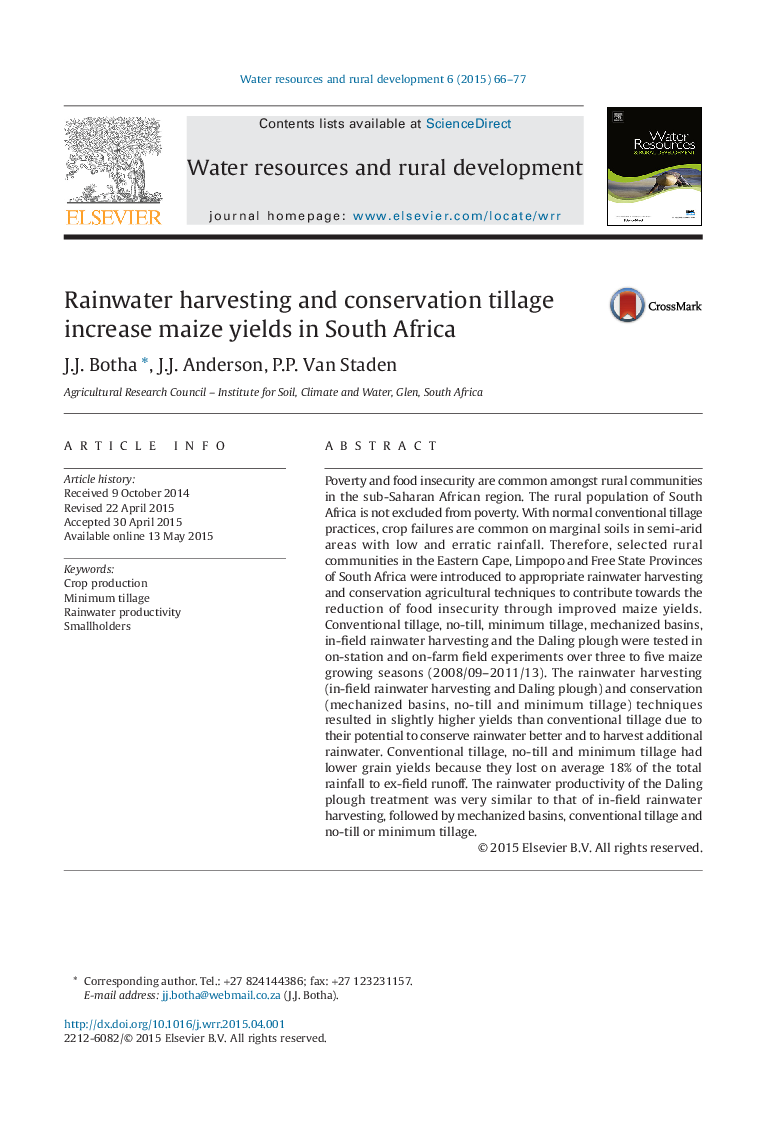| کد مقاله | کد نشریه | سال انتشار | مقاله انگلیسی | نسخه تمام متن |
|---|---|---|---|---|
| 1066599 | 1485932 | 2015 | 12 صفحه PDF | دانلود رایگان |
Poverty and food insecurity are common amongst rural communities in the sub-Saharan African region. The rural population of South Africa is not excluded from poverty. With normal conventional tillage practices, crop failures are common on marginal soils in semi-arid areas with low and erratic rainfall. Therefore, selected rural communities in the Eastern Cape, Limpopo and Free State Provinces of South Africa were introduced to appropriate rainwater harvesting and conservation agricultural techniques to contribute towards the reduction of food insecurity through improved maize yields. Conventional tillage, no-till, minimum tillage, mechanized basins, in-field rainwater harvesting and the Daling plough were tested in on-station and on-farm field experiments over three to five maize growing seasons (2008/09–2011/13). The rainwater harvesting (in-field rainwater harvesting and Daling plough) and conservation (mechanized basins, no-till and minimum tillage) techniques resulted in slightly higher yields than conventional tillage due to their potential to conserve rainwater better and to harvest additional rainwater. Conventional tillage, no-till and minimum tillage had lower grain yields because they lost on average 18% of the total rainfall to ex-field runoff. The rainwater productivity of the Daling plough treatment was very similar to that of in-field rainwater harvesting, followed by mechanized basins, conventional tillage and no-till or minimum tillage.
Journal: Water Resources and Rural Development - Volume 6, November 2015, Pages 66–77
